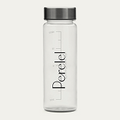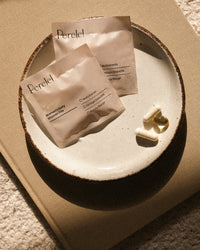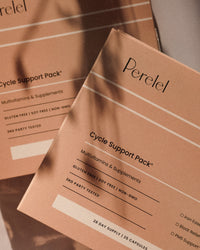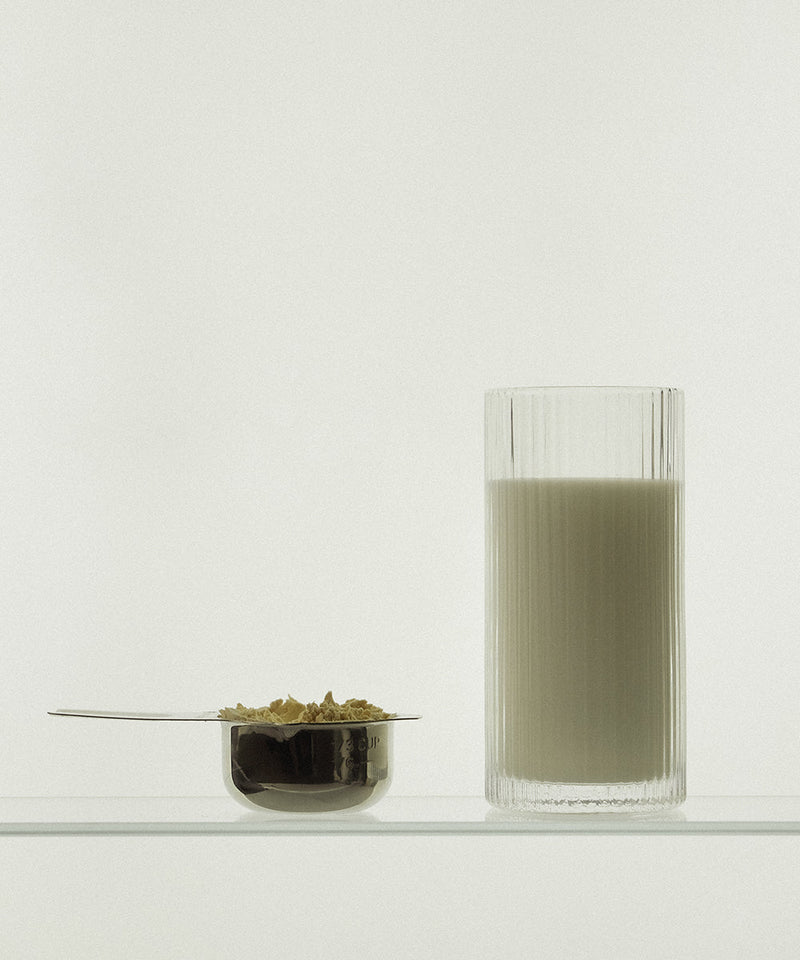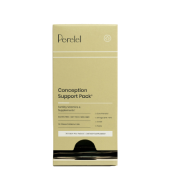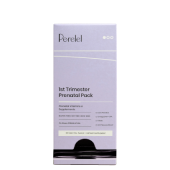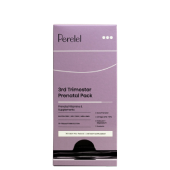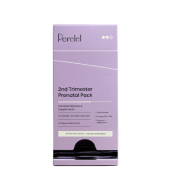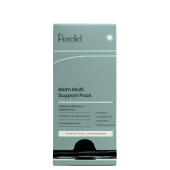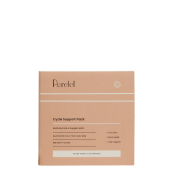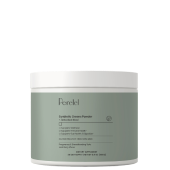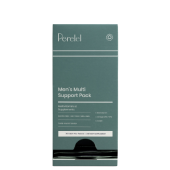It wasn't too long ago that we had to choose from a handful of whey-based protein powders—but these days, we have our pick of plant-based alternatives. It's a welcome change, but it can also be overwhelming. How do we know which plant-based protein source is the "right" one? Is a blend better than a single-source formula? And perhaps most importantly: Does it taste good, and does the texture blend well?
The good news? Our panel of leading doctors and dietitians have done quite a bit of research on this very topic—and you don't have to compromise on taste or nutrition to supplement with a plant-based protein powder. That said, not all plant-based protein powders are created equal, so let's break down exactly what you should be looking for.

1. Look For: A Complete Amino Acid Profile
Quick science lesson: Protein consists of building blocks called amino acids. Nine of these amino acids cannot be synthesized by the human body, and are therefore considered "essential." A protein source is considered "complete" when it contains all nine of these essential amino acids.
This is important because while many animal sources of protein contain all nine of these amino acids, many plant-based sources don't—and therefore aren't considered to be complete proteins.1,2
To get around this, many plant-based protein powders use a blend of different plant protein sources to ensure you're getting that complete protein. But there are some outlying plant-based protein sources that contain all nine essential amino acids—namely, pea protein.
Common Types of Plant-Based Protein Powder
-
Pea Protein: Made from yellow split peas, pea protein is rich in branched-chain amino acids (BCAAs), which help promote muscle recovery. It’s easily digestible and hypoallergenic, making it a great option for those with sensitivities to dairy or gluten. Pea protein contains all nine essential amino acids, making it a complete protein. It's why our doctors opted for regeneratively-farmed pea protein when formulating our Triple-Support Protein Powder—which contains 20 grams of protein per serving.3
-
Rice Protein: Rice protein is made from brown rice and is high in cysteine and methionine, two amino acids essential for muscle repair. While rice protein is considered an incomplete protein on its own, many plant-based protein powders combine it with other sources to offer a complete amino acid profile. 4
-
Hemp Protein: Derived from the seeds of the hemp plant, hemp protein powder is a good source of fiber, omega-3 fatty acids, and essential amino acids. While it’s lower in protein content compared to pea or soy, it’s a great option for those looking to boost overall nutrition. 5
-
Soy Protein: Soy protein is a complete protein, meaning it contains all nine essential amino acids. It’s one of the few plant-based proteins to be classified as "complete" and offers about 20 grams of protein per serving. Soy protein is often used in blends to enhance the protein profile. 6
-
Blends: Many plant-based protein powders use a combination of various plant sources, such as pea, rice, and hemp, to create a product that provides a more complete amino acid profile. These blends are popular for their balanced nutritional benefits.
2. Look For: Taste and Texture You'll Actually Enjoy
Is there anything worse than a chalky, gritty protein smoothie—or an earthy aftertaste? Certain plant-based protein sources tend to have a pronounced flavor, so trial and error might be your best bet to find something you'll thoroughly enjoy every single day.
For what it's worth, we've had our fill of underwhelming plant-based protein powders—so we diligently taste-tested our Triple-Support Protein to confirm that it would be delicious when blended into a smoothie, chia pudding, or even by itself in milk or water. It has a subtle, creamy vanilla flavor profile without any added sugar.
$35.22
First Month
Shop the Article:


Triple-Support Protein
$55.23
Shop Now
3. Look For: An Ingredient List You Can Get Behind
Translation: no weird gums, additives, or added sugar.
In addition to the ingredients and manufacturing practices to avoid, let's look at some positive additions to your go-to protein powder blend. 90% of women don't get enough fiber in their daily diet—which is why choosing a plant-based protein powder with fiber is an easy way to start upping your intake. Just make sure you choose a low-FODMAP, prebiotic blend to avoid any bloating.
Another addition our doctors recommend looking for is creatine. This compound may have a bodybuilder reputation, but it's actually highly beneficial for women—supporting both muscle health and cognitive function. Our changing hormones throughout menstruation, pregnancy, postpartum and menopause can also make it more difficult to utilize our creatine stores, which makes supplementation all the more important.7
You guessed it: In addition to 20 grams of plant-based protein, Triple-Support Protein contains five grams of fiber and three grams of creatine.
How to Incorporate Plant-Based Protein Powder Into Your Routine
With the right formula, plant-based protein powder can be a versatile addition to your diet. It’s commonly used in smoothies and shakes but can also be added to oatmeal, pancakes, baked goods and more. (We even enjoy it in ice cream.)
Plant-based protein powders are an excellent choice for those seeking to boost their protein intake. With a wide range of plant protein sources like pea, rice, soy and hemp, these powders offer a variety of amino acids, fiber, and essential nutrients to support muscle growth, recovery, and overall health. Whether you’re looking to build muscle, lose weight, or simply improve your diet, plant-based protein powder is a convenient and nutritious addition to any healthy lifestyle.
Sign up to receive doctor-backed, stage-specific content in your inbox each week.
theFolio in Your Inbox
This article is for informational purposes only. It is not, nor is it intended to be, a substitute for professional medical advice, diagnosis, or treatment and we recommend that you always consult with your healthcare provider. To the extent that this article features the advice of physicians or medical practitioners, the views expressed are the views of the cited expert and do not necessarily represent the views of Perelel.
Resources:
- Plant Proteins: Assessing Their Nutritional Quality and Effects on Health and Physical Function, Nutrients, NIH
- What Are Complete Proteins?, Cleveland Clinic
- The Current Situation of Pea Protein and Its Application in the Food Industry
- Nutritional Quality, Chemical, and Functional Characteristics of Hemp Protein Isolate
- Narrative Review on Rice Proteins: Current Scenario and Food Industrial Application, NIH
- A review on plant-based proteins from soybean: Health benefits and soy product development, Journal of Agricultural and Food Research
- Creatine Supplementation in Women’s Health: A Lifespan Perspective, NIH
- Plant Proteins and Exercise: What Role Can Plant Proteins Have in Promoting Adaptations to Exercise?, NIH
- Dietary fiber: an unmatched food component for sustainable health, Food and Agricultural Immunology
